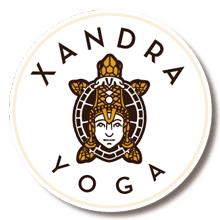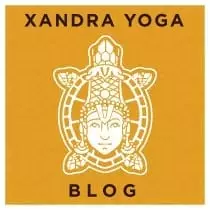Photo Credit: A la poursuite d’un rêve
Vinyasa : « Vi » means in a special way « Nyasa » veut dire to place.
There is a lot of confusion about the word Vinyasa. Do we know what are we teaching? « Vinyasa Yoga, Yoga Vinyasa, Ashtanga Yoga, Ashtanga Vinyasa Yoga ».
On Social Networks we can read that some teachers are teaching Vinyasa Yoga which is a more dynamic Yoga while others prefer to teach Hatha Yoga which is more « connected » with the breathing.
For a lot of people « Vinyasa » means:
Chaturanga Dandasana
Urdhva Mukha Svanasana
Adho Mukha Svanasana
And as a matter of fact it is. On the other hand it will be extremely reductive to resume or define the term « Vinyasa » only by these three asanas.
A Vinyasa is by definition a movement executed in a flow motion with the breathing. For instance when you lift yourself from the couch to go in the kitchen you are doing a Vinyasa. The number of Vinyasa will depend on how many breathes and movement you have taken in order to reach the kitchen. As soon as you have reached your destination the Vinyasa stops.
Uttita Trikonasana is having 5 Vinyasas.
- Inhale – Spread the leg 3 feet apart and the arms
- Exhale – Turn the feet to the right side, go down to catch the right big toe, take five (or more) times to breathe
- Inhale – Come up
- Exhale – Turn the feet to the left side, go down to catch the left big toe, take five (or more) times to breathe
- Inhale – Come up
There was not any « Chaturanga Dandasana, Urdhva Mukha Svanasana, Adho Mukha Svanasana » and still we have done 5 Vinyasas.
It is then really interesting to notice that when the Hatha Yoga is taught it is also included Vinyasa.
The Vinyasa is the car or the vehicle that drives us in and out of the asana (posture).
Each time we are breathing from an asana to another one we are doing a Vinyasa.
If we would have added a knee flexion while rising the arms up before going to Trikonasana we would have added more Vinyasas.
Once we are IN the Asana there is no Vinyasa, we just count the number of breathing that can go from 5 to 12 or more.
If we would have added: exhale Chaturanga Dandasana, inhale Urdhva Mukha Svanasana, Exhale Adho Mukha Svanasana then we would have added 3 more Vinyasas to Trikonasana means that in total we would have done 8 Vinyasas to reach the asana and to come out of it.
The Vinyasa is a movement executed with and by the breathing.
Vinyasa is simple as moving our body with a conscious breathing.
You can practice Vinyasa in Hatha Yoga, Iyengar Yoga, Yin Yoga etc.
In all physical activities there is a Vinyasa. Professional Dancers are the first to use the breath before moving in order to place their body. Without placement they can not center, without any centering they can not dance.
Vinyasa is a complicate word to indicate a breathing pattern using our conscious.
It is teaching us how to breathe and mostly where to breath. Therefore if you need one inhalation to rise your arms up you have to be sure that your inhalation will be covering the all movement, so you might need to extend the breathing until the end of it.
Vinyasa is a beautiful way of moving through the breathe. By doing so we are practicing Pranayamas.
Pranayamas is the control of the breathing. By controlling our breathing we are controlling our emotions.
Namaste!

